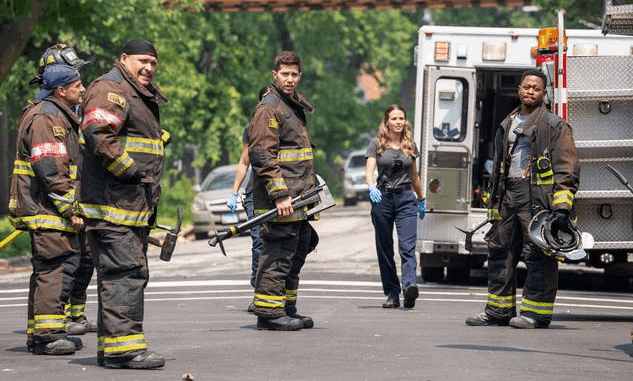
For more than a decade, Chicago Fire has burned bright on NBC’s primetime schedule, delivering high-octane rescues, heart-wrenching drama, and the kind of found-family dynamics that keep fans glued to the screen. But while the series has always had a loyal audience, its critical reputation has not always kept pace with its popularity — until now.
Season 13 has ignited not just in ratings but in critical acclaim. On Rotten Tomatoes, the season currently sits at a blazing 93% score from critics, nearly doubling the show’s very first season rating of 50%. It’s a milestone that underscores what fans have known all along: Chicago Fire is more than just a procedural — it’s a series that has grown deeper, sharper, and more emotionally resonant with time.
From Growing Pains to Powerhouse
When the series launched in 2012, creators Derek Haas and Michael Brandt set out to combine adrenaline-fueled rescues with the complexities of firefighters’ personal lives. Early episodes were packed with drama, but critics were lukewarm, seeing it as another network procedural trying to find its footing.
Fast-forward thirteen years, and the show has not only survived but thrived — becoming the crown jewel of the One Chicago franchise. The introduction of characters like Violet Mikami (Hanako Greensmith), the growth of leaders like Stella Kidd (Miranda Rae Mayo), and the addition of powerhouse talent such as Dermot Mulroney’s Chief Dom Pascal have given the show fresh energy while staying true to its roots.
The Critics Catch On
So why the surge in acclaim now? Many point to Season 13’s storytelling. Episodes like “Permanent Damage” — which revisited a fire from a decade earlier in a gripping, layered narrative — show a series confident enough to weave together past and present, while still delivering edge-of-your-seat action.
“Thirteen seasons in, you’d expect a show like this to start running on fumes,” one critic noted. “Instead, it feels like it’s burning hotter than ever. The writing is sharper, the characters richer, and the stakes more personal.”
Ratings Hold Steady in the Streaming Era
Even as streaming reshaped TV viewership, Chicago Fire has remained remarkably consistent. Season 13 episodes average between 5 and 6 million live viewers — nearly identical to its Season 1 numbers. In an era where long-running network shows often bleed audiences, Firehouse 51 has proven resilient.
NBC has noticed, too. The network recently renewed all three One Chicago shows — Chicago Fire, Chicago Med, and Chicago P.D. — cementing their place in the 2025–26 lineup. Though some cast members have exited and budget cuts have been reported, the franchise remains one of NBC’s most dependable performers.
What’s Next for Season 13
As the season barrels toward its finale, anticipation is at a peak. Following the explosive events of April 23’s “Permanent Damage,” the May 7 episode, “Cut Me Open,” promises even more tension. According to the official synopsis:
“With the crew stretched thin, a performance efficiency expert evaluates Firehouse 51; Kidd and Severide bond with the mother of the baby they hope to adopt.”
That tease alone suggests a mix of professional scrutiny and deeply personal stakes — the exact blend of drama and humanity that has propelled Season 13 into the critical spotlight.

The Legacy of 51
As Chief Boden (Eamonn Walker), Herrmann (David Eigenberg), Kidd, Severide (Taylor Kinney), and the rest of the team face new challenges, one thing is clear: Chicago Fire has secured its place not only as a fan-favorite but as a critical darling. What began as a 50% debut has, thirteen seasons later, become a near-perfect score.
For fans, it’s a validation of what they’ve believed since the beginning: that Firehouse 51 isn’t just about fighting fires. It’s about heart, family, and the enduring power of storytelling that still burns as brightly as the day the sirens first wailed.
